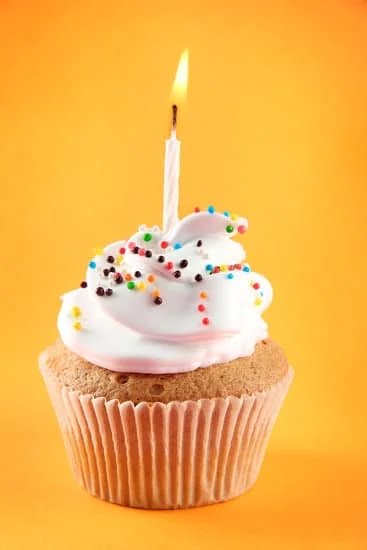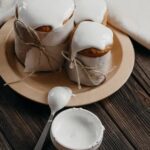Fondant Flowers Cake Decorating has become a beloved and popular technique among cake decorators. The intricate beauty and endless creative possibilities that fondant flowers offer have captivated both professional bakers and hobbyists alike. In this article, we will delve into the world of fondant flowers cake decorating, exploring why they are such a popular choice for cake decoration and the allure they bring to any occasion.
Fondant flowers not only add an elegant touch to cakes but also provide versatility in design. Whether you’re aiming for a romantic wedding cake or a whimsical birthday creation, fondant flowers can be tailored to suit any theme or style. With the freedom to shape, color, and arrange these delicate creations, your creativity knows no bounds when it comes to fondant flower cake decorating.
To fully grasp the art of fondant flower techniques, it is essential to understand various types of flowers that can be crafted with this medium. From classic roses to vibrant daisies and delicate tulips, each flower requires specific techniques that contribute to its realistic appearance. In this article, we will explore step-by-step guides on creating different types of fondant flowers using the right tools.
Before diving into the process of creating exquisite fondant flowers, it is crucial to have a well-prepared workspace and all necessary ingredients at hand. Organizing your workspace efficiently allows for smooth workflow while ensuring cleanliness and hygiene. Additionally, understanding measurement techniques for coloring and rolling out fondant is essential for achieving consistent results in your cake decorating endeavors.
In the following sections of this article, we will take a detailed look at crafting beautiful fondant roses as well as other popular flowers such as daisies and tulips. Each tutorial will provide step-by-step instructions on how to shape petals, assemble blooms, add intricate details, and achieve lifelike textures. Whether you’re a beginner or an experienced decorator looking to enhance your skills further, these tutorials will prove invaluable to your fondant flower cake decorating journey.
Understanding Fondant Flowers
As we delve into the world of fondant flower cake decorating, it is important to understand the various types of fondant flowers available and the techniques used to create them. From delicate roses to cheerful daisies and elegant tulips, each type of flower offers its own unique charm when adorning a cake. Whether you are a novice or an experienced baker, mastering different techniques will help bring your creations to life.
One of the first steps in understanding fondant flower cake decorating is familiarizing yourself with the different types of flowers that can be crafted from this versatile medium. Some popular options include roses, daisies, tulips, orchids, and lilies. Each flower requires its own set of techniques to capture its distinct shape and appearance.
Next, let’s explore some basic techniques for creating fondant flowers. One common method is hand shaping petals by using specialized molds or hand-cutting them individually. Another technique involves using various tools to add texture and dimension to the petals once they are shaped. These tools may include veining tools, ball tools, or brushes.
To execute these techniques effectively, it is crucial to have the right tools at your disposal. Some must-haves include rolling pins for evenly rolling out fondant, petal cutters in various sizes for shaping petals accurately, thinning foam pads for softening edges and adding curvature to petals, and silicone molds for creating intricate details. Other useful tools may include flower formers for drying and shaping petals as they dry and floral wires for providing support when attaching flowers to cakes.
By understanding the different types of fondant flowers available and honing your skills in various techniques, you will be well-equipped to embark on your fondant flower cake decorating journey. The proper use of tools is equally important in achieving professional-looking results. So gather your supplies and let your creativity blossom as you venture into creating stunning fondant flowers for your cakes.
Preparing Your Workspace and Ingredients for Fondant Flower Creation
Before diving into the process of creating fondant flowers, it is important to properly prepare your workspace and gather all the necessary ingredients and supplies. A clean and organized workspace will not only help you work efficiently, but it will also ensure that your fondant flowers turn out beautiful and professional-looking.
To set up a clean workspace, start by clearing off any clutter from your countertop or table. Make sure you have enough space to comfortably work with your fondant and tools. It is also a good idea to have some parchment paper or a silicone mat on hand to prevent the fondant from sticking to your work surface.
In terms of ingredients, you will need rolled fondant in various colors. You can either make your own fondant from scratch using gelatin, sugar, water, corn syrup, and glycerin, or you can purchase pre-made fondant from a cake decorating supply store.
Other essential supplies include a rolling pin, powdered sugar or cornstarch for dusting, a sharp knife or flower cutter for shaping petals, foam pads for thinning the petals, ball tools for frilling edges, toothpicks for holding petals together, edible glue or water for attaching pieces together, and food coloring gels for tinting the fondant.
When working with rolled fondant, proper measurement is crucial. Use measuring cups or food scales to accurately measure out the required amounts of ingredients. It is also important to color small portions of fondant at a time to achieve the desired shades without waste. To color the fondant evenly, knead the food coloring gel into the fondant until it is fully incorporated.
Lastly, before starting the process of creating fondant flowers, make sure that your hands are clean and dry. You can lightly dust them with powdered sugar or cornstarch to prevent sticking as well. Now that your workspace is ready and your ingredients are gathered, you are all set to start creating stunning fondant flowers for your cake decoration.
Crafting Beautiful Fondant Roses
Breaking down the process of creating stunning fondant rose blooms
Crafting fondant roses can be a challenging yet rewarding task. With attention to detail and patience, you can create beautiful and realistic-looking roses that will elevate your cake decoration to the next level. In this section, we will break down the process of creating stunning fondant rose blooms so you can impress your friends and family with your cake decorating skills.
Step 1: Shaping the petals and forming the bud
To begin creating your fondant roses, start by shaping the individual petals. Roll out a small piece of fondant on a clean surface dusted with powdered sugar or cornstarch to prevent sticking. Cut out teardrop shapes using a petal cutter or a sharp knife. Gently thin out the edges of each petal using a ball tool or by running your fingers along the edges.
Once you have shaped several petals, it’s time to form the bud of the rose. Take a small amount of fondant and roll it into a tight ball. Flatten one end slightly to create a base for attaching the petals later on.
Step 2: Assembling the petals to create realistic rose shapes
To assemble the petals, place one petal at a time around the base of the bud, slightly overlapping each petal as you go. Use edible glue or water brushed onto each petal to secure them in place. Continue adding more petals in layers, gradually increasing their size as you work your way towards the outer layers of the rose.
As you add more petals, gently cup them between your fingers to give them depth and shape. This will help create more realistic-looking roses. Be mindful of varying petal sizes and positions for a more natural appearance.
Step 3: Adding detail and texture to the fondant roses
To add detail and texture to your fondant roses, you can use various tools. A veining tool or the back of a paintbrush can be used to create veining lines on the petals for added realism. You can also use a small ball tool or the end of a toothpick to create creases and folds on the petals.
Consider dusting your roses with edible dusting powders to enhance their color and give them a velvety appearance. Use colors that complement the overall theme of your cake or experiment with different shades for a unique touch.
Remember, practice makes perfect when it comes to creating fondant roses. Don’t be discouraged if your first attempts are not as perfect as you envisioned. With time and patience, you will develop your own techniques and master the art of crafting beautiful fondant roses for your cake decorations.
Exploring the World of Fondant Daisy Decoration
Fondant daisies are a popular choice for cake decorating due to their adorable and dainty summery charm. They can add a touch of whimsy to any cake design and are perfect for occasions like birthdays, baby showers, or garden-themed events. In this section, we will explore expert tips on how to create beautiful fondant daisies that will enhance the overall look of your cake.
To shape the petals of a fondant daisy, start by rolling out white or colored fondant into a thin sheet. Use a small blossom cutter to cut out individual petals. Gently press down on one end of the petal with your finger to create a curved shape. Then, place the petal on a foam pad and use a ball tool to thin and frill the edges. Repeat this step for each petal needed for your daisy.
To form the fondant daisy, start by placing one petal on top of another at a slight angle. Secure them together using edible glue or water. Continue adding more petals in a circular formation, slightly overlapping each one as you go. By varying the angle and position of each petal, you can create a natural and realistic-looking daisy.
Once all the petals are in place, it’s time to add the center details to complete the look of your fondant daisy. Roll out a small ball of yellow fondant and flatten it slightly with your fingers or use a small circle cutter for precision. Attach it to the center of your daisy using edible glue or water.
| Ingredients | Supplies |
|---|---|
| Fondant (white or colored) | Blossom cutter |
| Edible glue or water | Foam pad |
| Yellow fondant | Ball tool |
Creating fondant daisies requires patience and attention to detail, but the end result is worth it. You can use these expert tips to experiment with different colors, sizes, and arrangements to create a variety of daisy designs. Whether you want a single daisy as a focal point or multiple daisies scattered across your cake, fondant daisies are sure to bring a charming touch of nature to your cake decorating endeavors.
Tulips
Tulips are a classic bloom that adds a touch of elegance and sophistication to any cake. Their delicate petals and vibrant colors make them a striking addition to fondant flower cake decorations. In this section, we will unveil the secrets behind crafting realistic fondant tulips, providing step-by-step tutorials on shaping and assembling tulip petals, as well as adding life-like colors and textures to your creations.
Step-by-Step Tutorial on Shaping and Assembling Tulip Petals
To begin creating fondant tulips, start by tinting your fondant with the desired color for the petals. Shades such as pink, red, yellow, and purple work well in creating realistic-looking tulips. Roll out your colored fondant to about 1/8-inch thickness.
Next, use a petal-shaped cutter or template to cut out the tulip petals from the rolled fondant. You will need two larger petals for each tulip and three smaller ones. Gently shape each petal by cupping it slightly using your fingers or small foam shaping pads.
Take one of the larger petals and apply a small amount of edible glue or water along one edge. Carefully wrap the wet edge around a toothpick or floral wire until it overlaps itself slightly. Repeat this step with the other larger petal.
For the smaller petals, fold each one in half lengthwise to create a subtle curve. Apply edible glue or water along one edge of each smaller petal and attach them around the base of the larger petals, spacing them evenly.
Adding Life-like Colors and Textures to Your Fondant Tulips
Once your tulip petals are assembled, it’s time to bring these delicate blooms to life with realistic colors and textures. Use petal dusts or food coloring mixed with a clear alcohol solution to paint the tulips. Start by dusting the center of the tulip with a darker color, such as brown or dark pink, to create depth.
Then, use a lighter shade of petal dust or food coloring to add highlights to the outer edges of each petal. Apply the color using a dry brush technique, gently sweeping the brush over the surface of the petals. This will give your flowers a soft, natural appearance.
To add texture to your fondant tulips, use veining tools or toothpicks to create lines and indentations on the petals. Be mindful of the natural curves and contours of real tulips when adding these details. The fine lines and subtle textures will make your fondant tulips look even more lifelike and visually appealing.
With these techniques in mind, you can now confidently incorporate delicate and striking fondant tulips into your cake decorations. These beautiful flowers will surely impress your guests and become a centerpiece that embodies both elegance and artistry on any occasion.
Beyond Basics
When it comes to fondant flower cake decorating, the possibilities are endless. Once you’ve mastered the art of creating individual flowers, it’s time to take your skills to the next level by combining multiple fondant flowers to create a showstopper design. By mixing and matching different types of fondant flowers and arranging them in a visually appealing composition, you can create a truly stunning display that will impress everyone.
To start, choose a variety of fondant flowers that complement each other in terms of color, size, and shape. Consider using flowers from different families, such as roses, daisies, tulips, and more. This will add visual interest and dimension to your cake decoration.
Layering is key when combining multiple fondant flowers. Start with a base layer of larger blooms like roses or tulips, and then add smaller flowers like daisies or blossoms on top. This layering technique adds depth and complexity to your design.
In addition to layering, arranging the flowers strategically is crucial. Create balance by placing larger flowers on one side of the cake and smaller ones on the opposite side. You can also place clusters of flowers in certain areas for emphasis.
To enhance the overall impact of your design, consider incorporating leaves, vines, or additional decorations such as butterflies or ladybugs made from fondant. These elements provide an additional wow factor and make your creation even more eye-catching.
By combining multiple types of fondant flowers and using strategic layering and arrangement techniques, you can create breathtaking cake decorations that will leave everyone in awe. Let your creativity roam free and experiment with various combinations until you achieve the desired look. Remember to have fun throughout the process and embrace your artistic side. With practice and patience, you can master this advanced technique in no time.
Top Tips for Fondant Flower Cake Decorating Success
Creating beautiful fondant flower cake decorations can be a rewarding and enjoyable experience. However, achieving success in this art form requires some essential tips and tricks. Whether you are a beginner or a seasoned cake decorator, these top tips will help you create flawless fondant flower designs and take your cake decorating skills to the next level.
- Practice Makes Perfect: Like any other art form, practice is key to mastering fondant flower cake decorating. Take the time to practice creating different types of flowers using various techniques. The more you practice, the better you will become at shaping petals, assembling blooms, and adding intricate details.
- Quality Ingredients: To achieve the best results, it is important to use high-quality ingredients when making fondant flowers. Invest in good quality fondant that is easy to work with and provides a smooth finish. Additionally, use gel-based food coloring for vibrant colors that won’t alter the consistency of your fondant.
- Tools of the Trade: Having the right tools can make all the difference when it comes to fondant flower cake decorating. Some essential tools include a rolling pin for rolling out fondant, a set of various sized petal cutters for shaping petals, a ball tool for adding texture and dimension, and a foam pad for thinning out and softening edges.
- Attention to Detail: Paying attention to detail is crucial when creating realistic-looking fondant flowers. Take the time to add small intricate details such as veining on petals or dusting with edible dust for added depth and texture. These small details can elevate your designs and make them look more lifelike.
- Patience is Key: Fondant flower cake decorating can be time-consuming and requires patience. Take your time while shaping each petal or assembling flowers to ensure precision and accuracy. Rushing through the process may result in mistakes or uneven designs.
By following these top tips for fondant flower cake decorating success, you will be well on your way to creating stunning and eye-catching cake decorations. Remember to be patient, practice regularly, and let your creativity flourish. With dedication and a love for the art, you can create beautiful fondant flower cakes that will impress everyone who sees them.
Conclusion
In conclusion, fondant flowers are a popular choice for cake decoration due to their elegance, versatility, and creative freedom. Throughout this article, we have explored different types of fondant flowers such as roses, daisies, and tulips, and learned step-by-step techniques for creating them. We have also discussed the essential tools and ingredients needed for fondant flower cake decorating.
Creating stunning fondant flowers requires a clean and organized workspace along with proper measurement, coloring, and rolling techniques. Detailed tutorials on crafting beautiful fondant roses, adorable daisies, and delicate tulips have been provided to guide readers through the process. Additionally, we discovered how to combine multiple types of flowers into visually appealing compositions by layering and arranging them.
So whether you are a professional baker or someone who loves baking as a hobby, don’t hesitate to dive into the world of fondant flower cake decorations. With the knowledge gained from this article, you can unleash your creativity and create beautiful cakes that will amaze your friends and family. Let your imagination run wild as you explore the art of fondant flower cake decorating and bring joy through your delectable creations.
Frequently Asked Questions
How to decorate a cake with fondant flowers?
Decorating a cake with fondant flowers requires some skill and creativity. To start, roll out the fondant to a desired thickness and use flower-shaped cookie cutters or hand-cut templates to shape the flowers. Add details and texture by gently using tools such as veining or balling tools.
Allow these fondant flowers to dry and firm up for a few hours before arranging them on the cake. Once the cake is frosted with a thin layer of buttercream or ganache, apply gum paste adhesive or a small amount of water to the back of each flower using a paintbrush. Carefully place the flowers onto the cake, ensuring they adhere securely but delicately to avoid damaging their shape.
How far in advance can I make fondant flowers?
Fondant flowers can be made in advance to save time when decorating a cake. It is recommended to make them at least a week ahead so they have enough time to dry thoroughly and become firm enough for handling. Before making the flowers, ensure that you have all the necessary tools and materials ready, such as flower-shaped cutters, foam pads, and edible coloring agents if desired.
When shaping the fondant flowers, remember that they may shrink slightly during the drying process, so make them slightly larger than your desired final size. After shaping, leave them uncovered in a cool, dry place away from direct sunlight until they are fully dry and hardened.
How do you stick fondant flowers to fondant cake?
Attaching fondant flowers to a fondant cake requires careful technique to ensure they stay in place without causing any damage or toppling over. To begin, prepare your fondant-covered cake by applying a base layer of buttercream frosting or ganache which will act as an adhesive for the decorations. Next, lightly brush each flower with gum glue (a mixture of tylose powder dissolved in water) or water using a fine paintbrush or sponge dauber on their undersides where you want them positioned on the cake surface. Gently press each flower onto the fondant cake, making sure to distribute them evenly or according to your desired design.
Avoid using too much water or adhesive, as it can cause the fondant to become too moist and lose its shape. Additionally, take care not to handle the flowers excessively as they may become misshapen or crushed. Overall, patience and a gentle touch are essential for successfully sticking fondant flowers onto a fondant cake.

Welcome to our cake decorating blog! My name is Destiny Flores, and I am the proud owner of a cake decorating business named Cake Karma. Our mission is to provide delicious, beautiful cakes for all occasions. We specialize in creating custom cakes that are tailored specifically to each customer’s individual needs and tastes.





